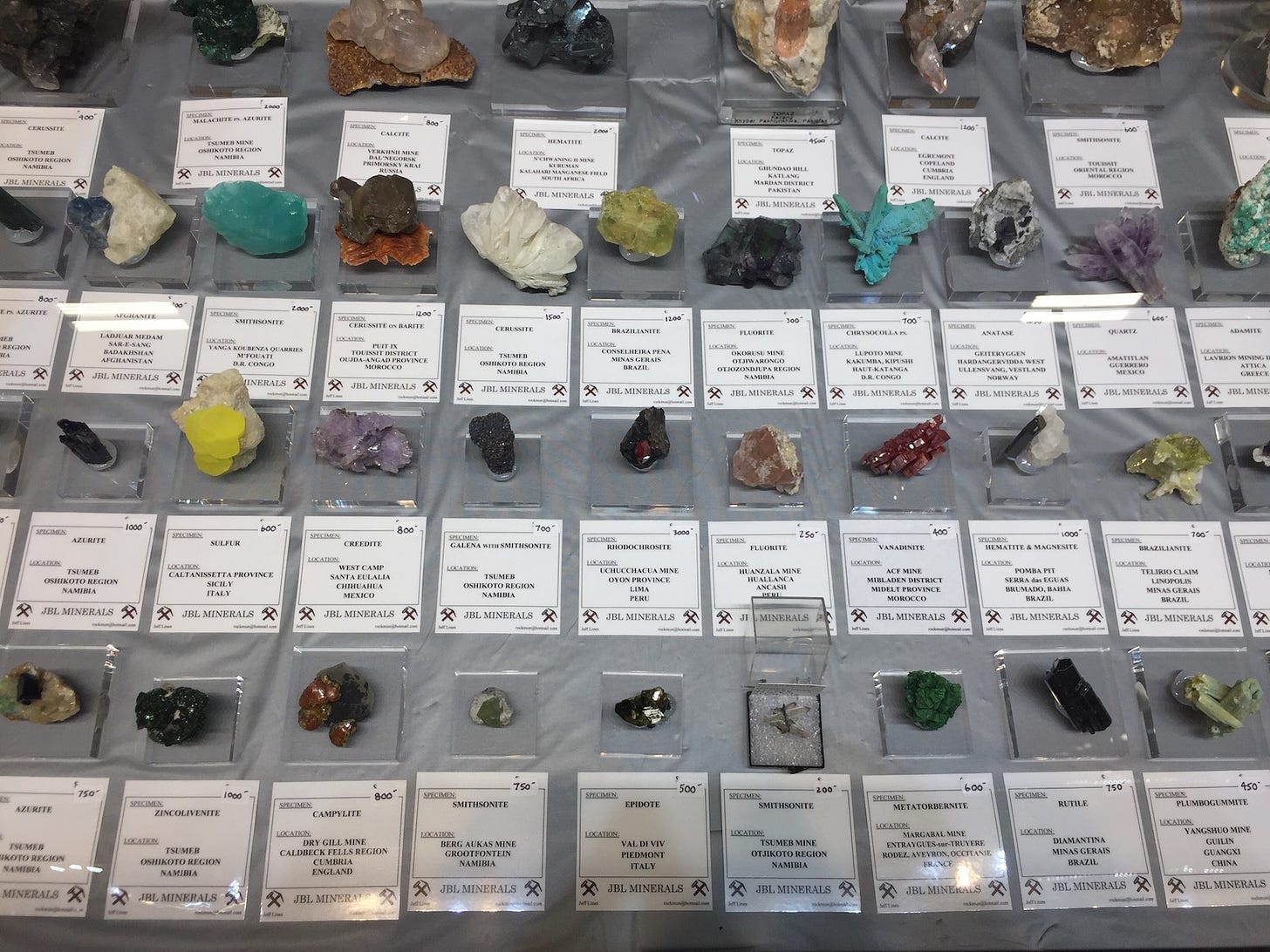Dear readers,
I write my newsletters early in the week so I have time for editing and sending on the weekends. Obviously, the end of this week brought two decisions from the U.S. Supreme Court that cry out for historical perspective and analysis. Several readers have asked for such analysis, and my hope is to provide some in the weeks ahead. This weekend, however, I could not assemble as thoughtful an essay as you deserve in the short time between Friday and today. So, this week’s newsletter is being sent as planned, one that I hope you’ll enjoy. -JS
Welcome to the Gem Show
A day in Colorado Springs that really rocked
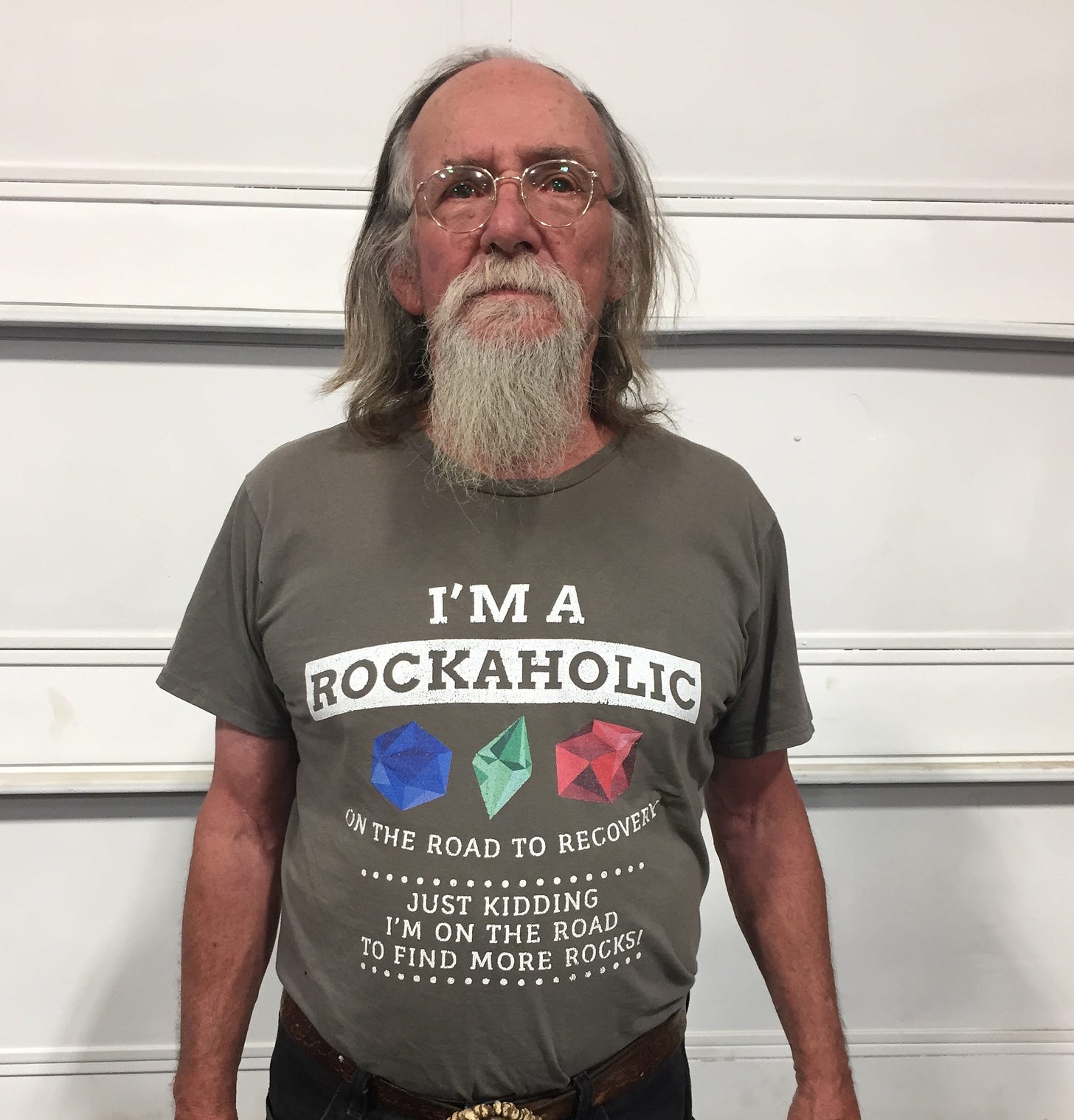
Two Saturdays ago, I delivered a speech to a U.S. Army reserve unit at Fort Carson, Colorado. The next day, I had time before my flight, so I did what any reasonable person would do on a Sunday in Colorado Springs—I went to a gem and mineral show. It was a fascinating glimpse into Colorado culture and history, so allow me to tell you about it.
Colorado has a storied history of mining. In fact, one of the soldiers I met at Fort Carson lives with his wife in Leadville, Colorado, famous for mining gold, silver, and—you guessed it—lead. It’s also home to the National Mining Hall of Fame & Museum. From Leadville to Colorado Springs is about 2 ½ hours, and in between is a stunning array of mountains, peaks, rock formations, and natural springs, all of which have seen generations of miners come and go hoping to strike a fortune. According to History Colorado, mining was far and away the most significant industry in Colorado during the 19th and 20th centuries. Miners established the modern-day city of Denver; helped Colorado achieve statehood (it had been a territory of Kansas); and even created Colorado’s own Gold Rush, the Pike’s Peak Gold Rush of 1859, which brought more than 100,000 fortune-seekers to the so-called Colorado Mineral Belt.
In many cases, the busts happened as fast as the booms. Gold mines were stripped of their gold so rapidly that towns with tens-of-thousands of people dwindled to a few dozen. Silver boomed in Colorado until the 1890s, when a recession plunged the price and many speculators went broke. Today there are abandoned mines and ghost towns all across the state. But the love and fascination with rocks has not disappeared, and people continue to stake, claim, mine, cut, facet, crown, polish, buy, trade, swap and collect a whole range of stones and gems extracted from the Earth by characters as colorful as the stones themselves.
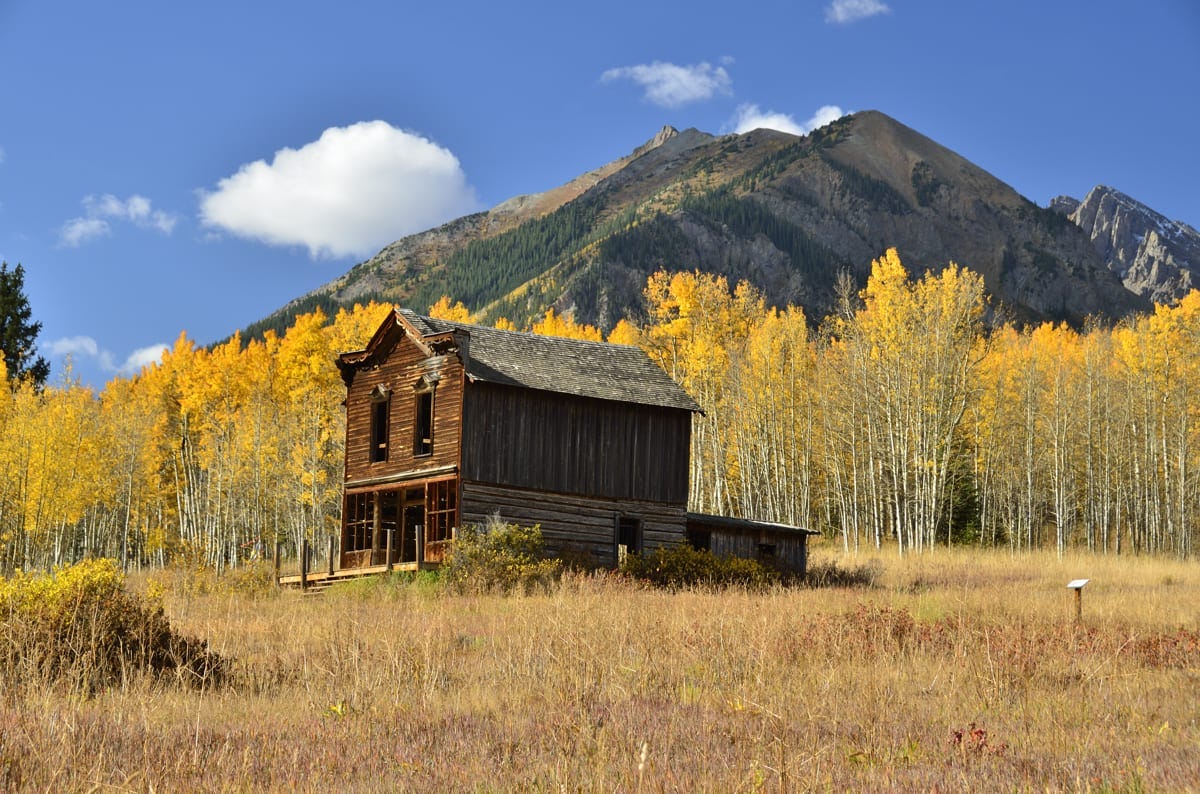
The Pikes Peak Gem, Mineral and Jewelry Show was not previously on my radar, but I happened to be driving along Route 24 and saw a sign for it on the side of the road. I put the venue into my phone and realized it was only 2 miles away. The location was the Norris-Penrose Events Center named after rancher Robert Norris and mine-owner Spencer Penrose. Penrose was originally from Philadelphia, struck it rich in the Cripple Creek Gold Rush, and later built the famous Broadmoor Hotel. He became a philanthropist, and his foundation has given tens-of-millions of dollars to organizations across Colorado in the decades after his death in 1939. Penrose also founded the Pikes Peak or Bust Rodeo, which has taken place each year in Colorado Springs for more than 80 years.
When I arrived, I was greeted by a volunteer named Valerie. A show ticket cost $5 and I paid with a $20, which prompted Valerie to lament how she would have to give me change in singles. I said that was fine, to which she said that she didn’t like one-dollar bills. I said that a solution was to accept payments in Bitcoin. “Oh!” she said, clearly not having heard of Bitcoin. “I’ll look into that.”
Upon entering the show, I was met with a sprawling gymnasium of tables replete with glistening stones. Chalky calcite rested next to smoky quartz, smooth rhodonite next to abraded ventifact. Artists and dealers had fashioned stones and gems into all imaginable shapes and forms. There were pendants, rings, earrings, necklaces, decorations, paperweights, plant holders, tree holders, rock candles and loose stones as far as the eyes could see.
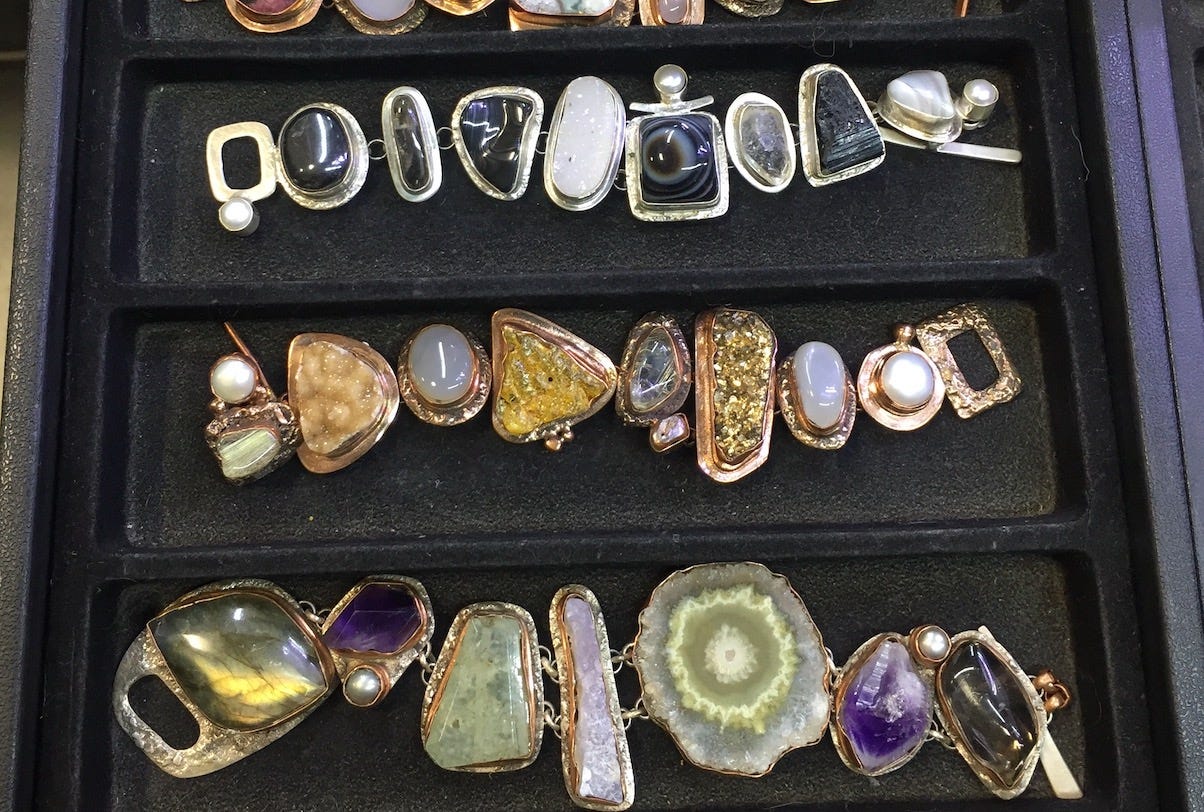
The first artisans I met were Donna and John Rhoads, owners of Gemaholics.com. Donna and John had spent their lives going around the world collecting and trading gems and rocks. They admitted that since they never had children, they’d had more freedom to travel; they recently returned from Tanzania, where they’d acquired some very rare wool. What attracted me to Donna and John were not solely their freshly-cut opal (their friend Dale cuts their gems; he was there too) but their matching shirts. The shirts were decorated with sparkling gems, and I asked Donna where they’d gotten them. “I made them!” Donna said. I expressed my amazement, to which she replied that she had made all kinds of clothes in her life. “Where did you learn to do that?” I asked. “We used to take Home Ec in school,” Donna said with a shrug. “We learned to sew and make clothes,” she said. “They don’t teach girls that anymore,” she lamented. She gave me her card and wrote her number on the back, telling me if I ever needed custom clothes, I should give her a call.
The next person I met was Kyle Warrington. Kyle owned a 28-acre claim at Pike’s Peak where he personally mined his gems. He had a video of himself extracting a massive fluorite crystal from his claim, which he was selling for many hundreds-of-dollars. He’d also enlarged a July 2019 article from Mineral News, which detailed the quartz crystals Kyle had uncovered in his Astro Pocket number 1 and Astro Pocket number 2, named after his dog. The article said that, “Quartz crystals line the ceiling, and the pocket is still producing quartz and fluorite. Specimens now reside at the Colorado School of Mines Geology Museum and other venues.”
The third person I met was Johnny Krutzler, owner of Enhancing the Stone. Krutzler is an artist who fashions stones and minerals into creative artworks. One sculpture was a skull he called “The Light of Joseph,” made from opals, diamonds and apatite, among many. The gold nugget tooth in its mouth had been personally mined by Krutzler from the Brooks Range in Alaska in 1975. He was selling the skull for $6,500.
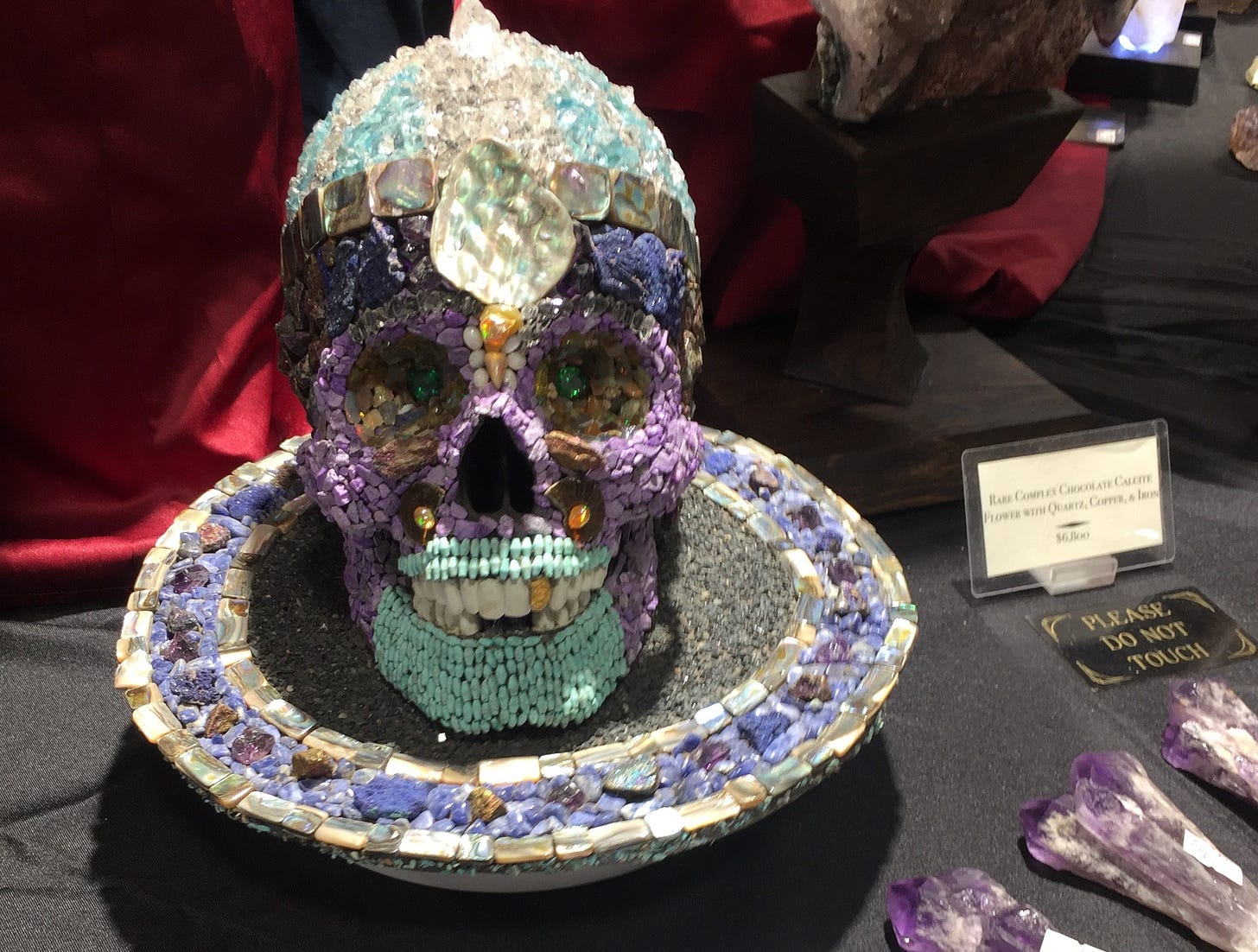
As I passed from table to table, there were thousands of small stones available for purchase. Children ran from table-to-table, oohing-and-aaahing at trays of rocks and buying stones for $2 or $5 to add to their collections. I could not remember the last time I saw so many excited and well-behaved young boys in one place, so eager to collect and hold onto their rocks. One boy was so thrilled to have his new gems that he refused to let his mother carry the bag. He wanted to carry it for himself.
One table with lots of children was manned by a man named Bodie. Bodie was a longtime Colorado miner sporting a long white beard, a blue Miners Co-op shirt, and a hat that read “The Second Protects the First.” Bodie had the children wrapped around his grizzled fingers, showing them varieties of sardonyx, malachite and ventifact. He had an array of fliers and postcards, including a black and white photograph advertising the Miners Co-op. He handed me the postcard and asked if I could identify anything unusual about it. Apart from children working in a mine with a donkey, I could not. He pointed out the chains that kept the children bound to their work stations. He then told me that after the Ludlow Massacre in 1914, in which the Colorado National Guard murdered the families of striking miners, workers had fought for and won more labor rights and better working conditions. I thanked him for the history lesson, and asked him where he’d gotten the photograph. “I don’t know,” he said. “My wife finds them on Facebook.” I resisted the urge to tell him I’d just written an entire book on that subject.
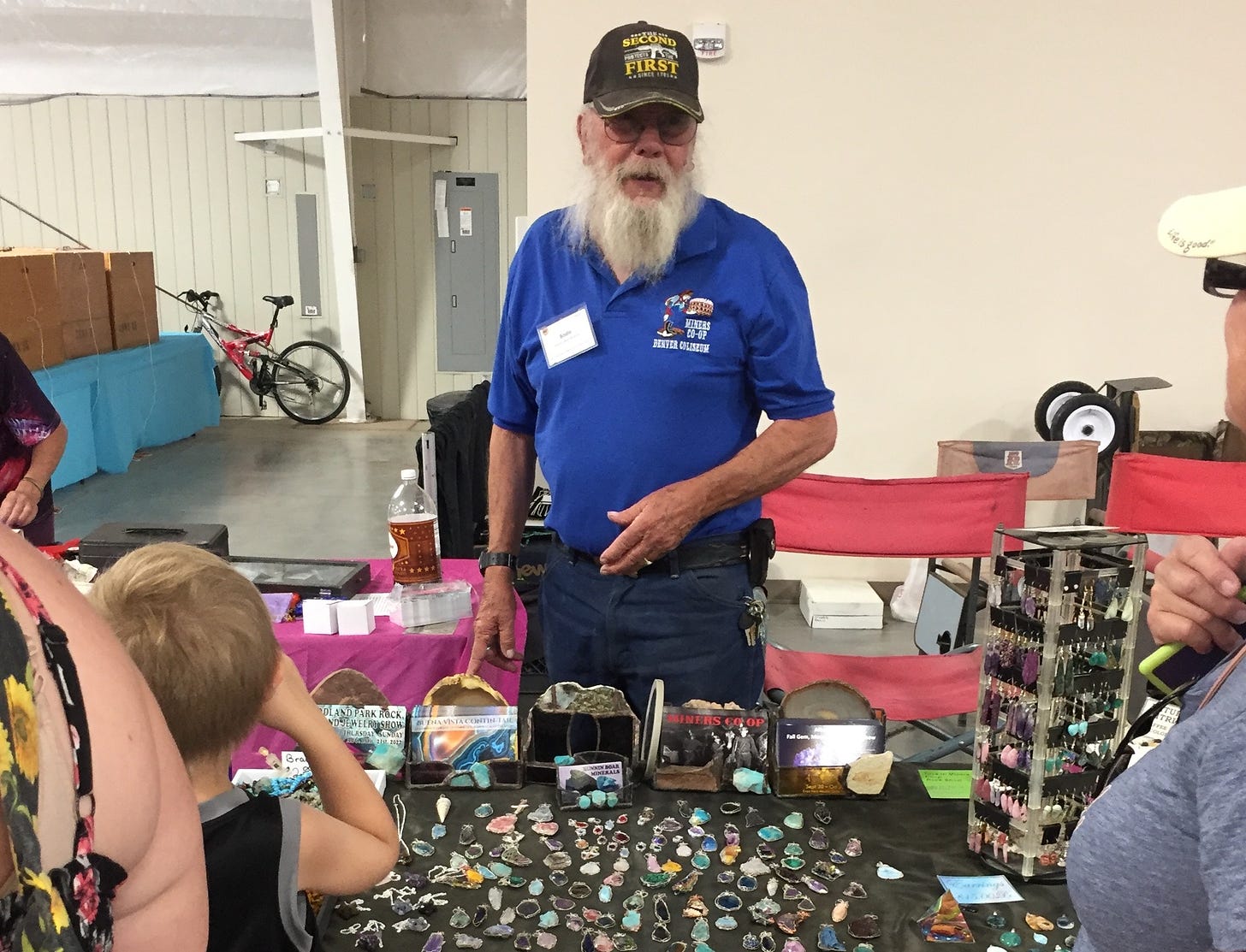
Another table that attracted many joyous children was a table full of fossils, staffed by the Western Interior Paleontological Society. In addition to gems and minerals, Colorado is home to Dinosaur Ridge, the Florissant Fossil Beds, and a wide range of fossils from the Earth’s prehistoric ages. These fossils include from the Cretaceous and Jurassic periods, and the Society’s table had a shark tooth from 10 million years ago. Parts of Colorado used to be covered by warm inland seas, and the region was home to an enormous super-volcano that produced the largest eruption ever known to have occurred on our planet. That eruption helped create Colorado’s mining industry; the molten rock created superhot and metal-rich waters that reacted with the rocks to create ore deposits of gold, silver, copper, lead, zinc and others minerals that fortune seekers would mine millions of years later. The woman staffing the table was named Nancy, and she was the past president of the Society. She told me that most children outgrow their dinosaur fascination, but her sons did not. As a result, she looked for ways to nurture their curiosity and stumbled upon the Western Interior Paleontological Society. She got involved, and before long became the President. She invited me to become a member.
While we were speaking a family of three approached the table. Their baby began to play with the fossils, and so I began casual small talk with the father. The small talk was unremarkable, but I was struck by his t-shirt, which read “Put on the whole armor of God” and depicted a winged knight with a sword next to a soldier carrying a weapon. There were many interesting wardrobes on display at the show. A man at the silent auction table wore a Vietnam Veteran hat. Another vendor wore suspenders and a bandana. There were many goths and punks in attendance, with a wide range of tattoos, dyed hair, piercings, and black outfits. One man wore a shirt that read, “I’m a rockaholic on the road to recovery. Just kidding, I’m on the road to find more rocks!”
The most interesting hat belonged to Scott Mendenhall, who along with his partner Garnet runs the jewelry wholesalers Ra Stones. Scott’s top hat had an array of colorful feathers, so I asked him about it. He said all the feathers came from birds he knew personally, including a waterfowl that hung out at the same hot springs as he did. I happened to be wearing a U.S. Army shirt, so Scott proceeded to tell me that he had previously served in the U.S. Army. The army had wanted him to be a sniper, but he opted to be a helicopter pilot and flew helicopter missions in Afghanistan before getting into gems. He and his girlfriend now cut their own jewelry.
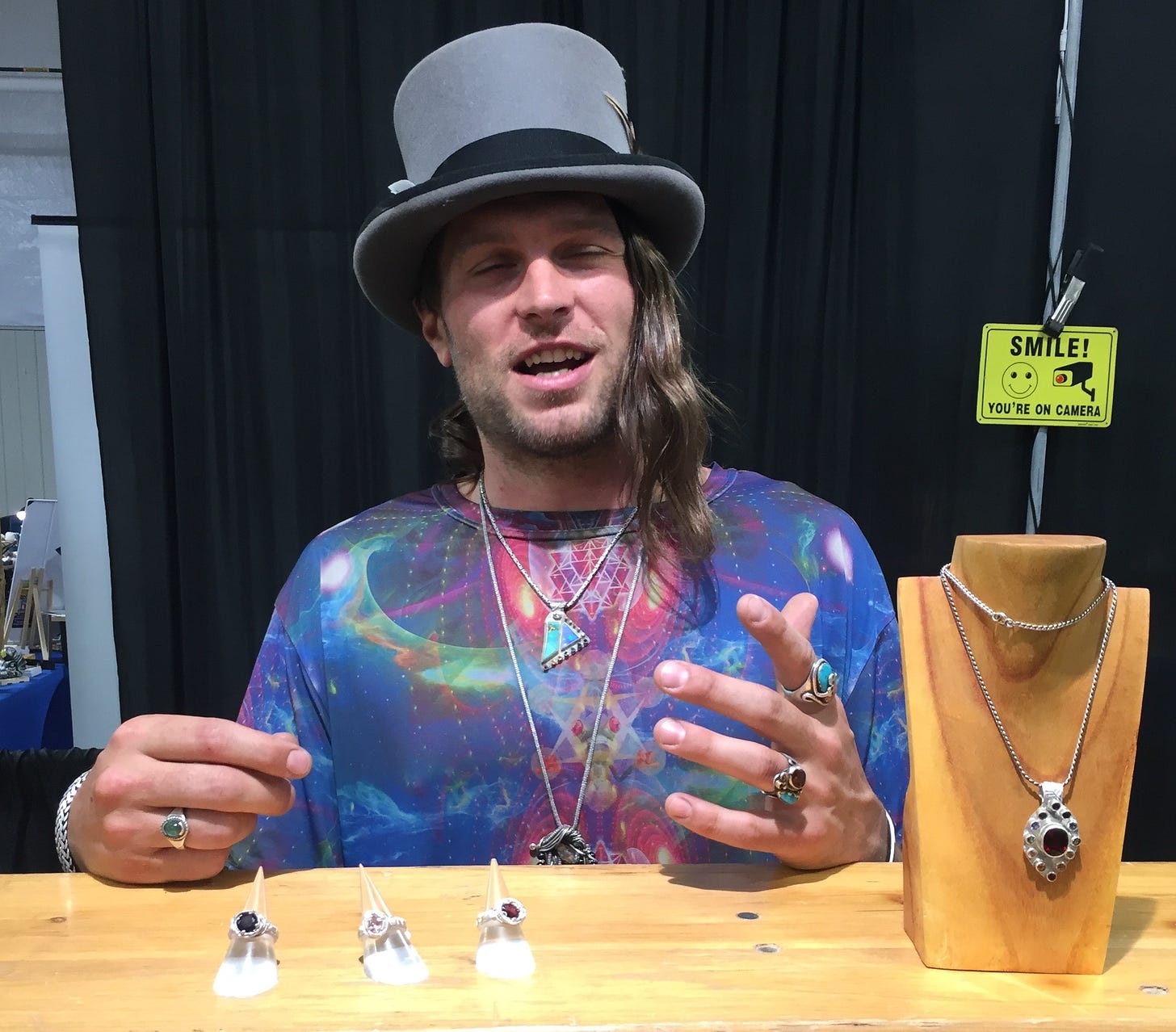
For the remainder of my time, I strolled from table to table soaking in the enormous diversity of minerals and gems our amazing planet creates. Calcite, fluorite, hemimorphite, diopside, pyrolusite, obsidian, barite, malachite, tatahouine, imilac, mundrabilla, lepidolite, prehnite, moonstone, tourmaline, neptubite, crystals… it was all on display. It was not solely from Colorado, either. Many of the gems came from other parts of the world, including Australia, Indonesia, Brazil and multiple countries in Africa. Two of the dealers I spoke to said they had contacts in Brazil who mined gems and brought them to the U.S. Multiple people mentioned an annual show in Tucson, Arizona, where people from around the world exchange and trade. That may have to be my next destination.
After two hours on my feet staring at rocks and taking copious notes, I decided to call it a morning. I had learned a lot, met some interesting people, and taken more than 200 photographs on my phone. In the parking lot I passed a pick-up truck with a “Let’s Go, Brandon” sticker next to several cars with bumper stickers for environmental causes. It was close to 100 degrees in the sun, and so I sat in my rental car, letting the air conditioning cool me down before hitting the road. I thought about all the ways that history shows up in our lives, creating the world that we operate in without us fully realizing it. Dinosaurs, ancient eruptions, ghost towns, labor strikes, speculators, philanthropists, and generations of fortune seekers all converged in one gem show held inside a gymnasium in southern Colorado. The richness and intrigue of history sit like gems below the surface of our lives, there to be mined and excavated. If you put in the work to find them, the rewards can be beautiful.
Have a good week.
Want to contribute to the conversation? Paid subscribers can leave a comment or ask a question below. Become a paid subscriber today.





